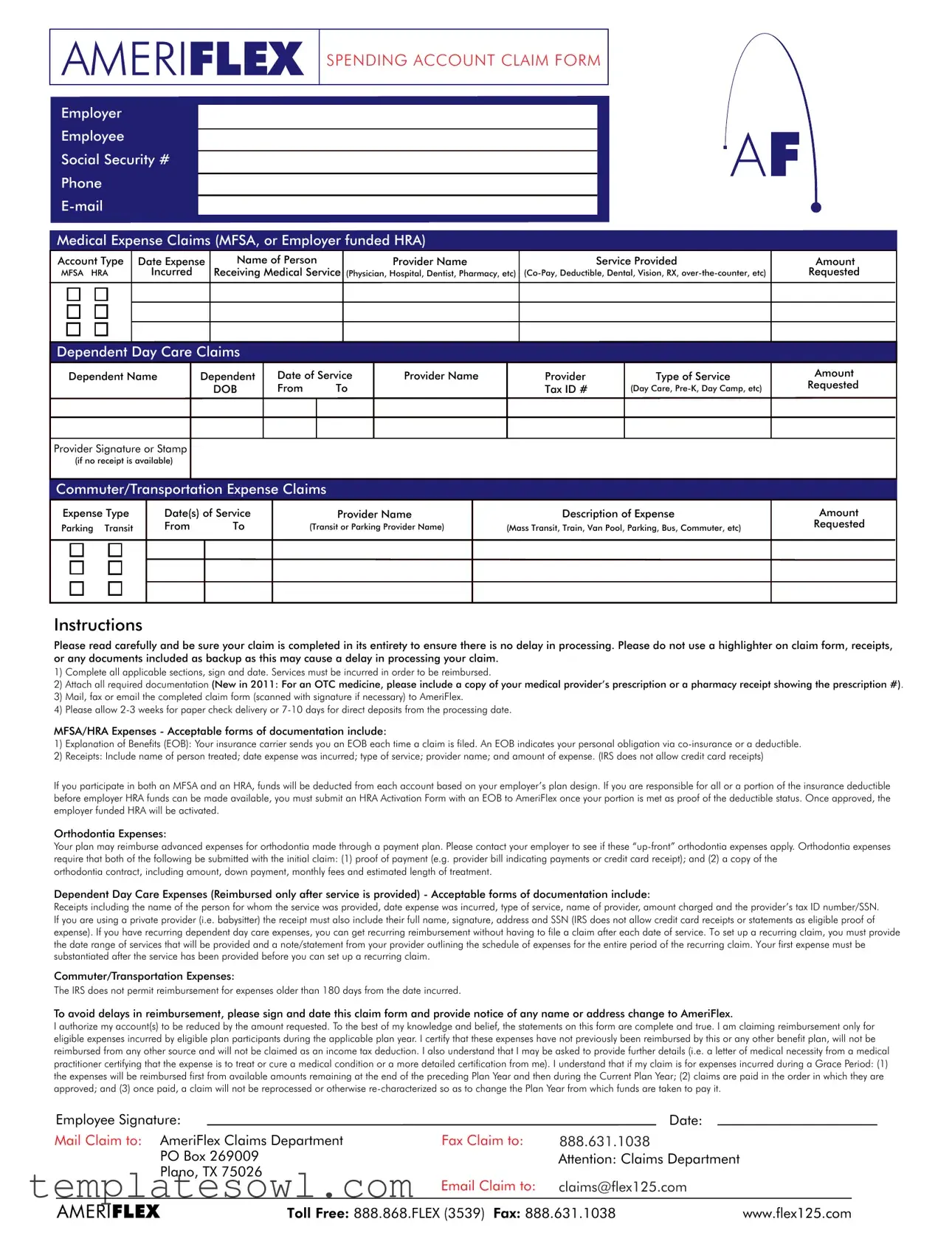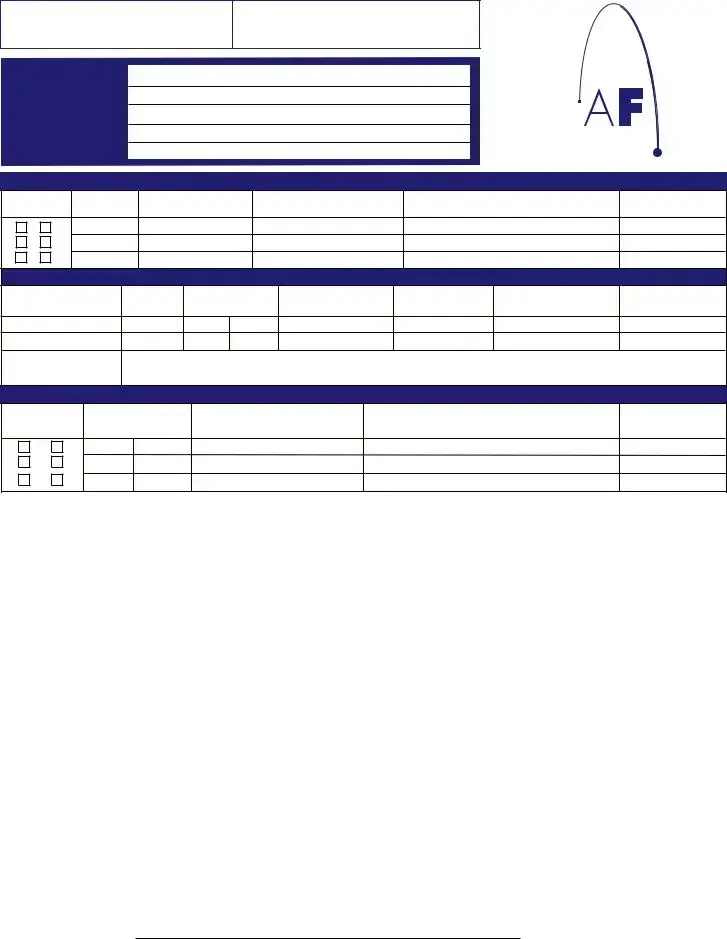What is the Flex125 Claim form?
The Flex125 Claim form is a document used by employees to request reimbursement for eligible expenses incurred under the AmeriFlex Spending Account program. This program includes Medical Flexible Spending Accounts (MFSA), Health Reimbursement Arrangements (HRA), and other benefits associated with dependent day care and commuter expenses. Completing the form accurately is essential for timely reimbursement.
How do I complete the Flex125 Claim form?
To complete the Flex125 Claim form, first make sure you fill out all applicable sections. You'll need to include your personal information, details about the medical services or expenses incurred, and any relevant provider information. Additionally, gather and attach all required documentation, such as receipts or Explanation of Benefits (EOB). Ensure you sign and date the form before submitting it.
What types of expenses can I claim with this form?
You can claim various types of expenses, including qualified medical expenses (like co-pays and deductibles), dependent day care costs, and transportation-related expenses. It's important that these expenses have been incurred during the applicable plan year and comply with IRS guidelines.
What documentation do I need to attach to the claim form?
Documentation required depends on the type of claim. For medical expenses, you need EOBs, receipts detailing service provider information, and the costs incurred. For dependent day care claims, receipts must contain the provider's tax identification number or Social Security number, as well as the necessary details of the service provided. Commuter claims require receipts showing the expense type and provider information.
How long will it take to process my claim?
Once your completed claim form is received, it typically takes 2-3 weeks for paper checks to be delivered and around 7-10 days for direct deposits to process. To speed up this process, ensure that your claim is filled out completely and accurately, along with all necessary supporting documents.
Can I submit a claim for expenses incurred before my coverage started?
No, you cannot submit claims for expenses incurred before the effective date of your coverage or plan year. Make sure to only request reimbursement for expenses that were incurred during the coverage period in which you are enrolled.
What if I have recurring dependent day care expenses?
If you have consistent dependent day care costs, you can set up a recurring reimbursement. To do this, you must show the provider’s statement outlining the schedule of expenses for the entire period and submit proof of your first incurred expense after the service has been provided.
What should I do if I have a name or address change?
Notify AmeriFlex immediately if you have a name or address change. Update your information on the claim form to prevent delays in processing your claims and receiving reimbursements.
How do I submit my completed claim form?
You can submit your completed Flex125 Claim form in several ways: mail it to the AmeriFlex Claims Department, send it via fax to 888.631.1038, or email a scanned copy with your signature to claims@flex125.com. Choose the method that is most convenient for you.
What happens if my claim is incomplete?
If your claim form is incomplete, it may cause delays in processing. AmeriFlex may return it for you to complete the missing sections or provide additional documentation. To avoid this, take the time to complete the form fully and double-check all attached documents before submission.

